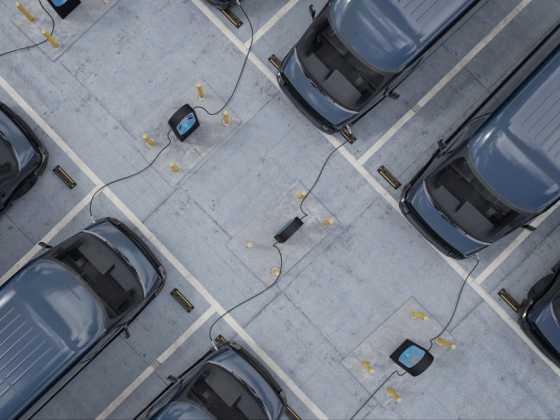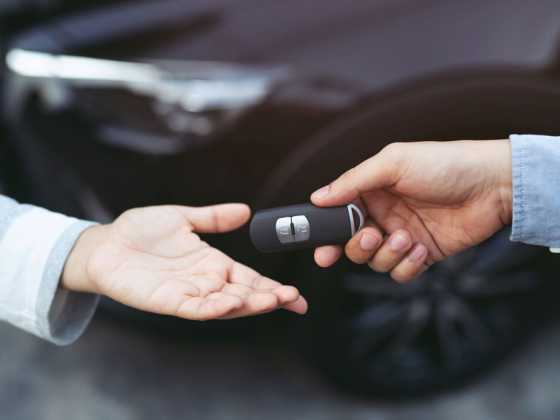“We’ve tried every zero-emission solution out there”

London-based car service Green Tomato Cars has been using hydrogen-fuelled cars and other low-emission vehicles since 2015. We speak to Jonny Goldstone, the company’s founder and managing director, about why he continues to back hydrogen as an alternative fuel
Please give some background on Green Tomato Cars: what made you start and what was the low-emission car market like then?
When we launched Green Tomato Cars in 2006 our mission was clear – and it’s exactly the same today: to demonstrate that environmentally focused businesses can be commercially sustainable too. Sustainability really is our ‘north star’. Our commitment has always been to using the lowest emitting vehicle that does the job – and that proviso is what brought us to hydrogen.
At the start, the Toyota Prius was the obvious choice by far. Remember, this was back when nobody knew what a hybrid car was. We were the first private hire operator to use the Prius, and many of the established industry players thought we were from another planet. Today, more than 50 per cent of all taxis and private hire cars in London – and probably most other cities on the planet – are Prius and other hybrids.
That isn’t to say every other car in 2030 will be hydrogen-fuelled, but we’re confident that we understand the current situation and what lies ahead – and we’ve always been prepared to take the lead. We hope others will follow again this time round.
You were an early adopter of hydrogen fuelled vehicles: What made you choose hydrogen? What were the challenges?
We started with Hydrogen in 2015 because it’s in our DNA; we owe it to our drivers, passengers and the broader community around us – to do all we can to improve air quality in London. We’ve tried every zero emission solution out there, so it made sense to give hydrogen a go too.
The challenge we’ve always faced with Battery Electric Vehicles (BEVs) is that our drivers need vehicles with decent range – at least 200 miles; but they can’t afford for it to take a long time to recharge or refuel. The cars also need to be affordable at scale, so while it was viable for us to have one Tesla S, that was never going to make sense as a mass fleet solution.
Hydrogen FCEVs appeared to tick all three boxes: in 2015 the range was around 300 miles, now some of our drivers are getting closer to 400 miles on a single tank; the refuel time is comparable with a petrol pump; and the price – while not insignificant, thanks to some grant funding assistance* from the EU and OLEV with the early cars – means we’ve been able to afford to scale up.
Our initial trial lasted two years and involved just two cars. The biggest challenge was around the infrastructure, but with only two cars that was rarely an issue as we were able to micro-manage the logistics if one of the stations (there were only three around London in 2015) needed to be taken offline for maintenance or an upgrade.
You have 50 Toyota Mirai hydrogen cars in use, with another 14 on order: What makes you continue to back hydrogen as an alternative fuel?
We could only move from two to twenty-five, and then fifty cars, once we were confident the cars were reliable and the infrastructure was sufficient to operate that many vehicles.
In terms of the cars themselves, as you would expect from Toyota, we’ve never had a problem with the technology. On top of that, our drivers love them and our passengers do too – they’re a premium model compared to the Prius, and of course the drive is incredibly smooth.
And the refueling infrastructure had moved to the scale we needed too. When the trial began there were (full time) stations in Teddington, Rainham and Heathrow; new stations at Cobham, Gatwick and Beaconsfield have now doubled that infrastructure, with more to come soon.
You’ve recently made a public call for the number of hydrogen refuelling stations to increase - how big of a problem is the limited refuelling infrastructure?
The lack of infrastructure is of course a relative issue – the current number of stations is fine for our own fleet and the few other fleets using hydrogen. But if you want to go from tens of cars to hundreds, let alone thousands, then there needs to be a proportionate increase in supply.
That means more stations, better distributed – currently, Rainham is the only station east of the City, and there are no stations anywhere close to central London. As the number of cars increase, drivers will not have the luxury of knowing they are likely to be the only one turning up at a refueling station; and it is going to become more pressing to have a refueling option relatively close to wherever they are dropping off or picking up their next passenger.
Are there other challenges to operating hydrogen fuelled vehicles?
There is a shortage of vehicle types (and competitive tension between manufacturers) for the timebeing, but that’s inevitable at such an early stage.
Of course, one of the main advantages of hydrogen over battery in this context is around vehicle size – a bigger battery means an ever-heavier car, whereas hydrogen offers a much lighter solution. So for us, we would love to see a hydrogen MPV on the market soon and we’re sure the manufacturers are looking at that angle too.
As for cost, we managed to make the starting price affordable and that will only come down with time and volume, so we’re optimistic on that front too.
You also have PHEVs on your fleet. What are your views on the government planning to ban the sale of new plug-in hybrid cars and vans?
We’ve been beating this drum for what feels like a long time now – removing all forms of petrol and diesel cars from the roads is the right ambition, but the alternatives have to exist first. It’s no good forcing everyone to move to BEVs, HFCEVs or any other kind of zero emission transport until the vehicles and supporting infrastructure are in place.
Not only does moving too far too fast make politicians and town planners look stupid, but it also gives sustainability a bad name by association. The deniers and nay-sayers can lazily blame the problem on being forced to ‘go green’, rather than the poor planning and execution of the change.
So, we urge government at all levels to do things as urgently as they can, but in the right order: over-commit on infrastructure, and incentivise manufacture and uptake, before taking away and penalising the old options for which there will now be viable substitutes. Other countries have shown how well that model works, I don’t see why we can’t do the same in the UK.
What are your thoughts on pure battery electric vehicles?
I have chosen BEVs as my personal cars since 2013. I’m a massive fan of the technology and of course there’s much greater choice of models than with HFCEVs. In terms of Green Tomato Cars, a growing number of our network partners also drive BEVs for work purposes, so it’s encouraging to see that those drivers are making them work.
As soon as there’s enough infrastructure we expect them to become a meaningful part of our corporate fleet alongside HFCEVs. Although pure battery cars do have less range than hydrogen cars, the bigger challenge is about the scale, suitability and accessibility of the infrastructure required for an operation like ours - and the right combination of carrot and stick from government on all levels.
Can you see hydrogen becoming a viable fuel to the masses? What needs to happen to achieve this?
I would be surprised to see anything like as many hydrogen FCEVs as battery EVs in the future – but that’s when it comes to private passenger cars.
For heavy duty vehicles - larger vehicles and higher mileage vehicles, such as taxi and private hire – we see hydrogen playing a significant role because of the advantages it holds in terms of range and refuelling time.
For that to happen we need to see investment from across the board – business and government – to create the perception of scale amongst stakeholders, and build the confidence that will ensue. And we need the battery and hydrogen players to appreciate that it will be far better for both sectors if they support one another, rather than trying to score points against each other. I find the “our zero emissions are better than your zero emissions” exchanges that you see on LinkedIn and other platforms both infantile and a complete waste of time, when both groups have so much further to go – and could be doing so much to raise the tide for each other.
Please share any advice for companies looking to add hydrogen-fuelled vehicles to their fleet?
For now the key question around operating a hydrogen fleet is access to the refueling infrastructure. If your operations are suitably located, give it a go. If not, you’ll have to wait until the necessary infrastructure is in place – or look at sourcing a ‘mobile’ solution to give yourself a suitable level of fuel security.
* Grant funding includes direct funding from the EU’s ‘ZEFER’ project. This project has received funding from the Fuel Cells and Hydrogen 2 Joint Undertaking under grant agreement n.779538. This Joint Undertaking receives support from the European Union’s Horizon 2020 research and innovation programme and Hydrogen Europe and Hydrogen Europe Research.






